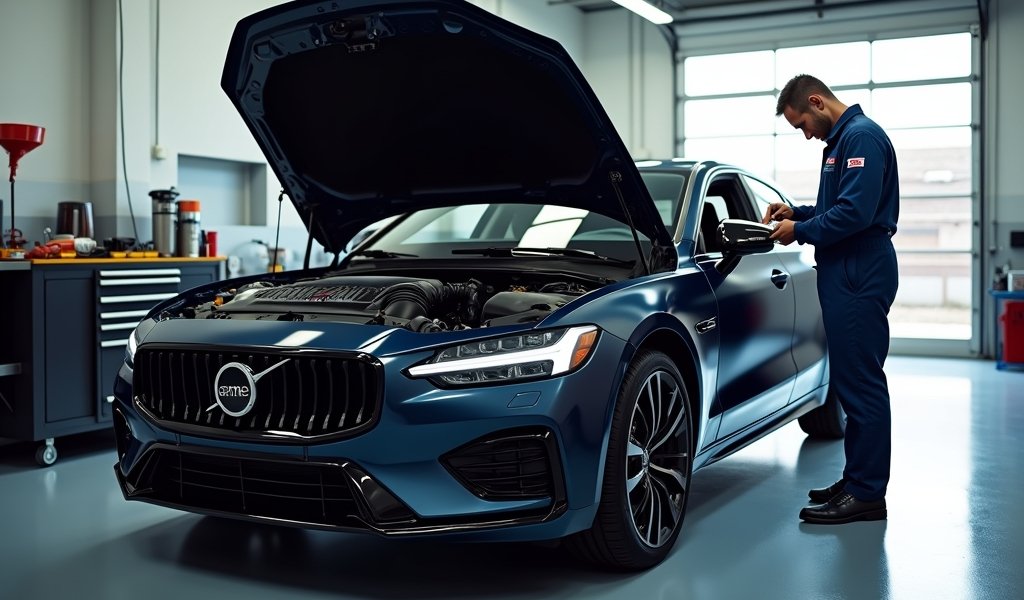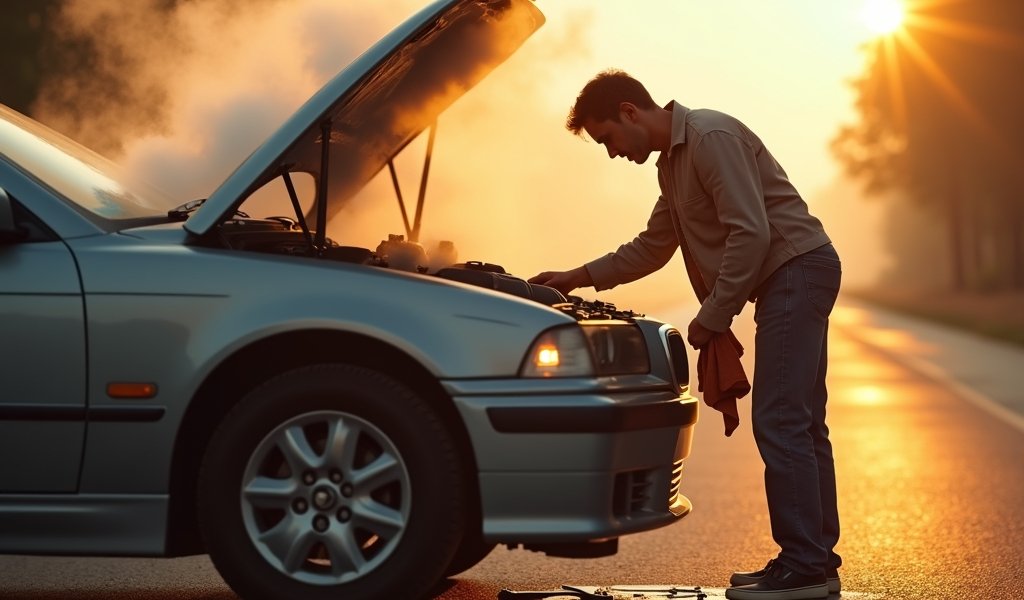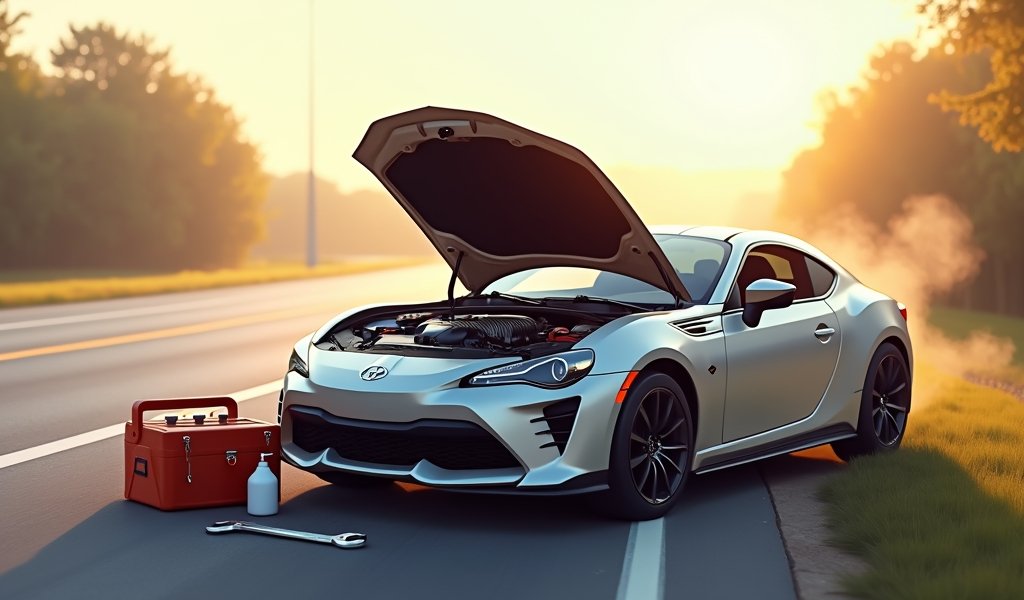Overview
This article identifies seven common causes of engine overheating: low coolant levels, radiator problems, water pump failure, thermostat issues, cooling fan malfunction, clogged cooling systems, and head gasket failure, while providing specific fixes and preventative maintenance tips for each. Regular cooling system maintenance is crucial for preventing expensive repairs, as overheating can lead to catastrophic engine damage that could have been avoided through simple periodic checks and timely interventions.
Table of Contents
- Recognizing Engine Overheating: Key Warning Signs
- Cause #1: Low Coolant Levels
- Cause #2: Radiator Problems
- Cause #3: Water Pump Failure
- Cause #4: Thermostat Issues
- Cause #5: Cooling Fan Malfunction
- Cause #6: Clogged Cooling System
- Cause #7: Head Gasket Failure
- Preventative Maintenance: Keeping Your Engine Cool
- When to Get Professional Help
- Conclusion
- Frequently Asked Questions
Engine overheating causes serious headaches for drivers everywhere. As a master technician with 20+ years under the hood, I’ve seen countless smoking engines roll into my shop—often with damage that could have been prevented. In fact, cooling system failures account for about one-third of roadside breakdowns, leaving drivers stranded and facing potentially expensive repairs.
Your engine operates efficiently within a very specific temperature range. When it exceeds those limits, components can warp, seals can fail, and in extreme cases, engines can suffer catastrophic damage. The good news? Most overheating issues stem from predictable causes that you can often address before they leave you stranded.
Let’s dive into the seven most common engine overheating causes and the practical fixes that can save your engine—and your wallet.
Recognizing Engine Overheating: Key Warning Signs
Before we tackle the causes, you need to know when your engine is crying for help. Here are the telltale signs your engine is running too hot:
- Temperature gauge creeping toward or into the red zone
- Steam billowing from under your hood (never a good sign!)
- Sweet, syrupy smell (leaking coolant) or burning odors
- Sudden loss of engine power or rough running
- Dashboard warning lights illuminated
- Unusual ticking or thumping sounds from the engine
If you notice any of these symptoms while driving, don’t ignore them! Pull over when safe, turn off your engine, and let it cool down. Continuing to drive an overheating vehicle can turn a minor fix into a major repair bill.

Cause #1: Low Coolant Levels
The most common cause of engine overheating is simply not having enough coolant in the system. Your coolant—a mixture of antifreeze and water—works tirelessly to absorb heat from your engine and carry it to the radiator, where it can dissipate. When coolant levels drop, there’s just not enough liquid to handle this critical job.
Why Coolant Gets Low
Coolant doesn’t just disappear on its own. If your reservoir is low, you’ve got a leak somewhere in the system. Common culprits include:
- Deteriorated hoses with small cracks or tears
- Loose hose clamps or connections
- Radiator leaks (often at seams or due to external damage)
- Faulty radiator cap not maintaining proper pressure
- Weeping water pump seals
- Internal leaks (head gasket issues)
The Fix
For immediate relief, you can add coolant once the engine has completely cooled down. Never remove the radiator cap on a hot engine—the pressurized coolant can cause severe burns. Regular vehicle inspections help catch coolant leaks early.
For a long-term solution:
- Check coolant levels when the engine is cool
- Visually inspect all hoses and connections for signs of leaking
- Replace any damaged hoses or clamps
- Have the cooling system pressure tested to find hidden leaks
- Use the correct coolant type for your vehicle (check your owner’s manual)
I recently helped a customer who kept topping off coolant every few days—turns out a tiny hairline crack in their overflow reservoir was the culprit. The $35 replacement part saved them from eventual roadside breakdown.
Cause #2: Radiator Problems
Your radiator is the primary heat exchanger in the cooling system. As hot coolant flows through its many thin tubes, heat transfers to the metal fins and dissipates into the passing air. Over time, radiators can develop several problems that compromise their efficiency.
Common Radiator Issues
- External blockage from bugs, leaves, or road debris
- Internal clogging from coolant breakdown or corrosion
- Physical damage from road debris or minor accidents
- Corroded or leaking seams
- Failed radiator cap (unable to maintain pressure)
A properly functioning radiator should show even heat distribution across its surface when the engine is warm. Cold spots often indicate blockages, while leaks are usually visible as coolant stains or active drips.
The Fix
Start with the simplest solutions:
- Gently clean the exterior radiator fins with compressed air or low-pressure water (with the engine off and cool)
- Replace a damaged radiator cap ($10-20)
- Consider a professional radiator flush for internal deposits ($100-150)
- Repair small leaks with a quality commercial sealant as a temporary fix
- For significant damage, radiator replacement is often necessary ($300-700 depending on your vehicle)
According to research from AAA, preventative maintenance on cooling systems can reduce the chance of breakdowns by up to 70%. That’s why I always recommend seasonal cooling system checks to my regular customers.
Cause #3: Water Pump Failure
If your cooling system is the circulatory system of your vehicle, the water pump is its heart. This mechanical pump circulates coolant through the engine block, cylinder head, heater core, and radiator. When it fails, coolant movement stops, and heat builds up rapidly.
Signs of Water Pump Problems
Water pumps typically fail in predictable ways:
- Coolant leaking from the pump housing or weep hole
- Whining or grinding noises (indicating bearing failure)
- Engine temperature fluctuations
- Visible rust or play in the pump pulley
- Steam from the engine after shutdown
Most water pumps are driven by the engine’s timing belt or accessory belt. They contain an impeller that pushes the coolant and bearings that allow for smooth operation. Both can wear out over time.
The Fix
Unfortunately, there’s no quick fix for a failing water pump—replacement is necessary. This job ranges from moderately difficult to quite complex depending on your vehicle:
- Drain the cooling system
- Remove belts, pulleys, and components blocking access
- Replace the water pump (and timing belt, if due)
- Install a new gasket or seal
- Reassemble and refill with fresh coolant
This repair typically costs $300-750 at a shop. If your vehicle is approaching 100,000 miles, consider proactive replacement during timing belt service—you’re already paying for most of the labor at that point. Many DIY-friendly car repairs can save money, but water pump replacement often requires specialized tools and experience.
Cause #4: Thermostat Issues
The thermostat might be small, but it plays a crucial role in regulating engine temperature. This simple valve remains closed when your engine is cold to help it warm up quickly, then opens to allow coolant flow through the radiator once operating temperature is reached.
How Thermostats Fail
Thermostats typically fail in one of two ways:
- Stuck closed: Prevents coolant flow to the radiator, causing rapid overheating
- Stuck open: Causes engine to run too cool, reducing efficiency and potentially causing other issues
A thermostat stuck closed is by far the more dangerous condition, as it can lead to overheating within minutes of driving.
The Fix
Replacing a thermostat is relatively straightforward and inexpensive:
- Drain some coolant from the system
- Remove the thermostat housing (usually held by 2-3 bolts)
- Replace the old thermostat and gasket
- Reinstall housing and refill coolant
- Bleed air from the system if necessary
This repair costs around $125-275 at a repair shop but is a great beginner DIY project for the mechanically inclined. Just be sure to use the correct temperature-rated thermostat for your specific vehicle—using the wrong one can cause performance problems.
Pro tip: While the thermostat is out, check its operation by placing it in a pot of heated water with a thermometer. It should begin opening at its rated temperature (usually stamped on the thermostat itself).

Cause #5: Cooling Fan Malfunction
When your vehicle is moving, air naturally flows through the radiator. But when you’re idling or moving slowly, your cooling fans must create that airflow. Modern vehicles typically use electric cooling fans controlled by the engine computer or temperature switches.
Fan Failure Points
Several components can cause cooling fan issues:
- Failed electric motor
- Blown fuse or relay
- Faulty temperature sensor not triggering the fan
- Damaged wiring or connectors
- Broken fan blades
One tell-tale sign of fan problems is an engine that maintains normal temperature on the highway but overheats in stop-and-go traffic or while idling.
The Fix
Diagnosis starts with the simplest components:
- Check related fuses and relays first (often located in the main fuse box)
- Test fan operation by turning on A/C (which should trigger the fan)
- Visually inspect wiring and connectors for damage
- Test the temperature sensor with a multimeter if necessary
- Replace the entire fan assembly if the motor has failed
Fan replacement costs typically range from $300-600 at a repair shop. Always ensure any replacement fan matches your vehicle’s specifications for proper airflow—undersized fans may not provide adequate cooling.
I once had a customer whose engine would mysteriously overheat only during rush hour traffic. The culprit? A cooling fan that worked perfectly—until it got hot, which caused a thermal break in the wiring. The cheap fix? A $15 relay and some new wiring.
Cause #6: Clogged Cooling System
Over time, cooling systems develop internal buildup that restricts flow. Think of it like cholesterol in arteries—when passages narrow, circulation suffers. This buildup comes from:
- Mineral deposits from tap water or incorrect coolant mixtures
- Rust and corrosion from aging components
- Deteriorated gaskets or seals introducing contaminants
- Oil contamination from internal leaks
Restricted flow means less efficient heat transfer, leading to hot spots and eventual overheating. This is why manufacturers recommend periodic cooling system flushes as part of complete car service.
Signs of a Clogged System
Look for these indicators:
- Uneven engine temperatures (gauge fluctuations)
- Heater blowing cooler than normal
- Radiator warm at the top but cool at the bottom
- Discolored coolant (brown or rusty)
- Gritty residue in the coolant reservoir
The Fix
A complete cooling system flush is necessary:
- Drain all old coolant (properly dispose of it—it’s toxic!)
- Flush with cleaning solution designed for radiators
- Rinse thoroughly with distilled water
- Refill with the correct coolant/water mixture (usually 50/50)
- Bleed air from the system
Professional cooling system flushes cost $100-200 and should be performed every 30,000-60,000 miles depending on your vehicle manufacturer’s recommendations. Using distilled water for coolant mixing can significantly reduce mineral buildup over time.
According to Engineering Toolbox, clean coolant can improve heat transfer efficiency by 15-20% compared to contaminated fluid—a significant difference when it comes to preventing overheating.
Cause #7: Head Gasket Failure
The head gasket seals the junction between your engine block and cylinder head, keeping coolant, oil, and combustion gases separated. When it fails, these systems can cross-contaminate, causing multiple problems—including overheating.
Head gaskets can fail due to previous overheating events (creating a vicious cycle), age, poor installation, or design flaws in certain engines.
Symptoms of Head Gasket Problems
- White, sweet-smelling exhaust smoke (coolant burning)
- Milky oil on the dipstick (coolant mixing with oil)
- Bubbling in the coolant reservoir while running
- Unexplained coolant loss with no visible leaks
- Engine overheating despite cooling system repairs
- Cylinders losing compression (rough running)
The Fix
Head gasket replacement is a major repair involving:
- Removing numerous components to access the cylinder head
- Removing and inspecting the cylinder head for warping
- Machine shop services if the head is damaged
- Installing a new head gasket and necessary hardware
- Reassembly with precise torque specifications
This repair typically costs $1,200-2,500 at professional shops, making it crucial to address other cooling issues promptly before they cascade into head gasket failure.
While commercial “head gasket in a can” products exist, they rarely provide permanent repairs for true head gasket failures. They might temporarily stop small leaks, but significant failures require proper mechanical repair.
Preventative Maintenance: Keeping Your Engine Cool
An ounce of prevention is worth a pound of cure—especially when it comes to your cooling system. Follow these guidelines to avoid overheating issues:
- Check coolant levels monthly (when cool)
- Inspect hoses and belts twice a year for cracks or softness
- Flush and replace coolant according to your maintenance schedule
- Clean debris from the radiator and A/C condenser annually
- Address small leaks before they become big problems
- Replace the radiator cap every 4-5 years (they wear out!)
Make these checks part of your seasonal vehicle prep, particularly before summer. Nothing ruins a road trip faster than an overheating engine in 90-degree weather!
When to Get Professional Help
While many cooling system checks are DIY-friendly, some situations call for professional assistance:
- When you’ve addressed the obvious issues but overheating persists
- If you notice oil in the coolant or vice versa
- When special tools are required (pressure testers, leak detection equipment)
- If you’re not comfortable draining and refilling coolant
- When multiple cooling system components need replacement
Modern vehicles often have complex cooling systems with multiple circuits, electronic controls, and tight packaging that makes DIY work challenging. Don’t hesitate to consult a professional if you’re unsure—the cost of diagnosis is always cheaper than a replacement engine.
Conclusion
Engine overheating causes range from simple fixes like topping off coolant to complex repairs like head gasket replacement. The key takeaway? Don’t ignore the warning signs. Your engine is designed to operate within specific temperature ranges, and exceeding them can lead to catastrophic failure.
By understanding these seven common causes and their solutions, you’re better equipped to maintain your vehicle’s cooling system and prevent roadside emergencies. Remember that cooling system components work together as a team—a failure in one area often stresses others.
Preventative maintenance remains your best defense against overheating issues. Regular checks and scheduled cooling system service will keep your engine running at its optimal temperature, extending its life and keeping repair costs down.
Have you experienced engine overheating? What was the cause in your case? Share your experiences and questions in the comments below!
Frequently Asked Questions
How long can I drive with an overheating engine?
You shouldn’t drive with an overheating engine at all. Pull over immediately when safe to do so and turn off the engine to prevent serious damage.
Can I just add water if I’m low on coolant?
Water can work as a temporary emergency measure, but replace it with proper coolant mixture as soon as possible. Straight water lacks corrosion protection and proper boiling/freezing points.
How often should coolant be changed?
Most manufacturers recommend changing coolant every 30,000-60,000 miles. Check your owner’s manual for the specific interval for your vehicle.
Why does my car overheat in traffic but not on the highway?
This typically indicates a cooling fan problem. At highway speeds, natural airflow cools the radiator, but in traffic, you rely on the electric cooling fan.
Can a bad radiator cap cause overheating?
Absolutely. A faulty cap can’t maintain proper system pressure, lowering the boiling point of coolant and causing pressure loss. Radiator caps are inexpensive and worth replacing every few years.


Pingback: Check Engine Light Causes: 5 Quick Fixes - knowsyourcar.com